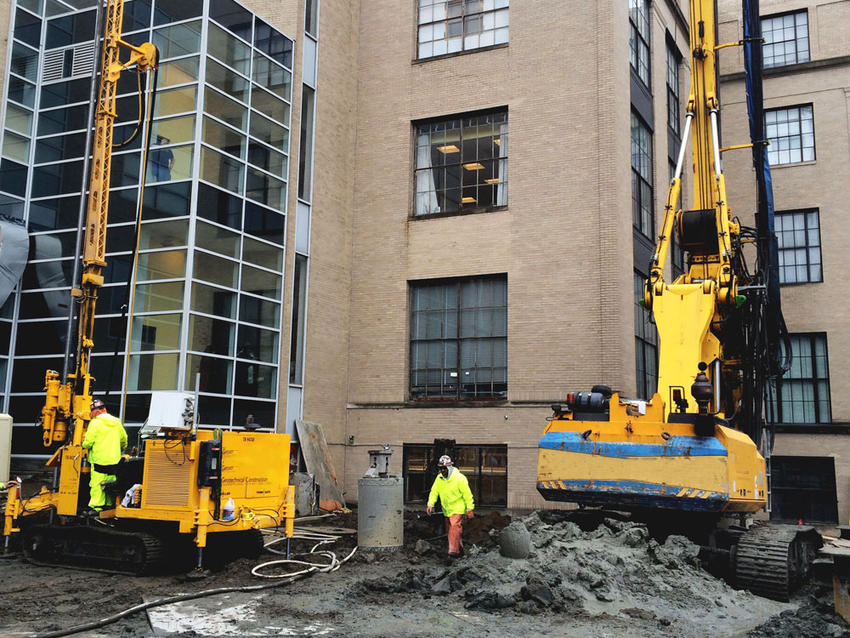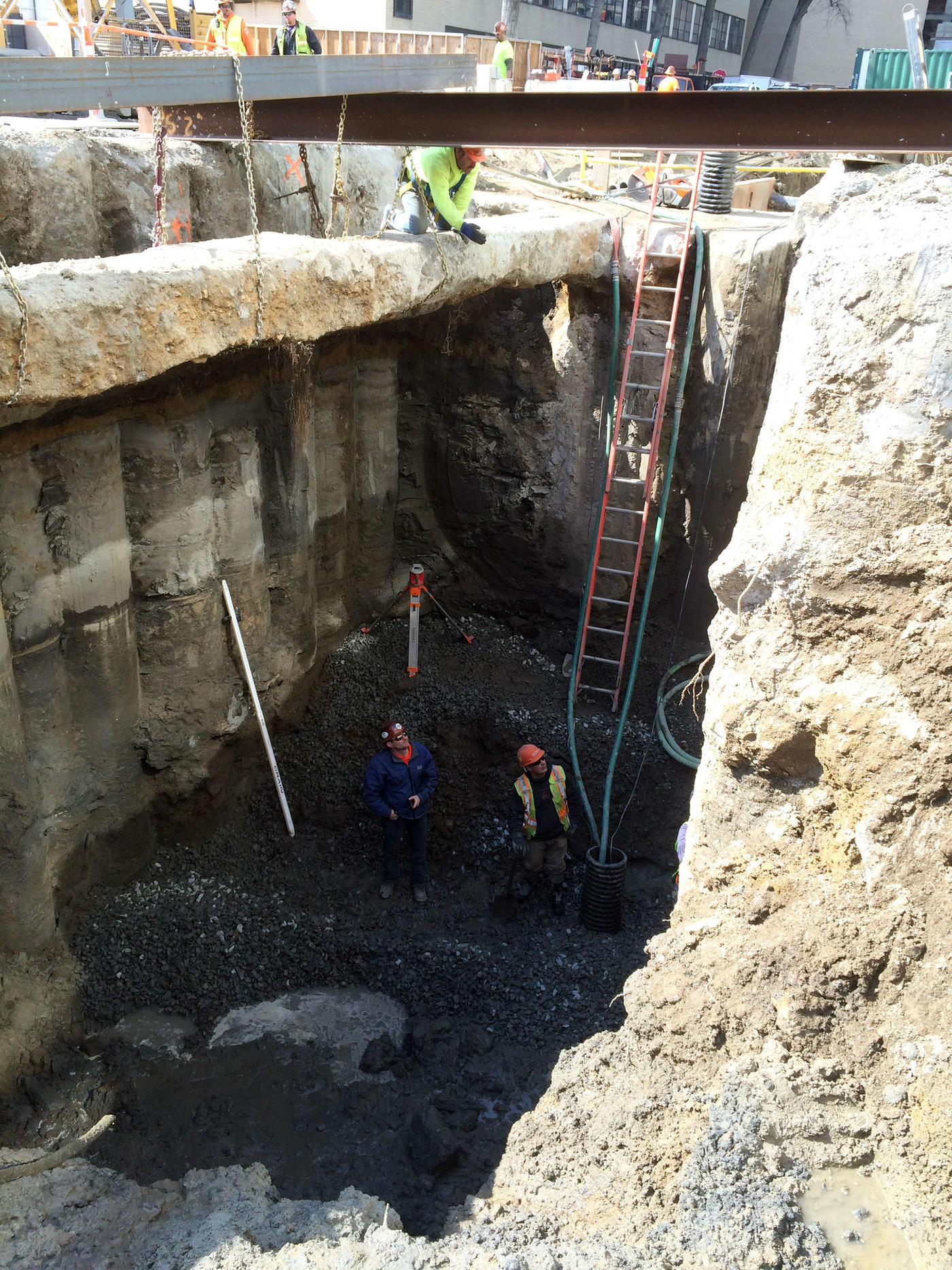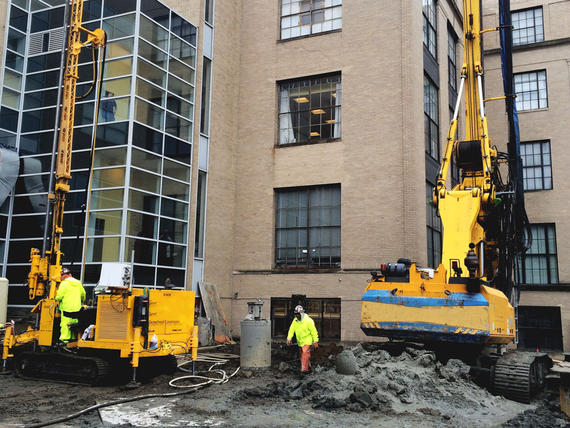Keller constructed earth retention and groundwater control to allow a 12 to 20-foot deep excavation for the MIT.nano Center research facility without affecting the adjacent sensitive structures and utilities.

The project
Construction of the MIT.nano Center research facility required earth retention and water control for relatively deep excavation.
The challenge
The planned excavation located immediately adjacent to three buildings on the congested campus needed to be accomplished without adversely affecting the adjacent structures and major existing utilities. The earth support solution was to provide permanent water control, temporary earth support, and underpinning of the immediately adjacent structures founded on timber piles, franki piles, and spread footings.
The solution
Keller designed and constructed earth retention and water control solution consisting of secant piles and jet grout columns. Secant piles were constructed along the edge of the excavation away from the existing structures. Jet grouting was the ideal solution for the remaining three sides where combined earth retention and structural underpinning were required, especially with the multiple existing utilities. The perimeter jet grout columns and secant piles intercepted a clay stratum below the planned excavation providing water cutoff. An automated, real-time structural and geotechnical-monitoring program was implemented to monitor deflections of the adjacent facilities during construction, allowing Keller to modify processes and manage geotechnical risk during construction.

